I’m nearing the end of a 10-state road trip with my older daughter. And these are big Western states. So my regular posts will be on hiatus until July. In the meantime, I thought I’d share some photos of historical criminal justice practices. This is the final Wednesday vacation posting.
Humans are very creative about finding ways to harm one another. This carries over to capital punishment, which has been inflicted a variety of ways. Here are some historical examples.
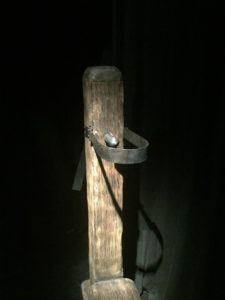 Garrote. This was used as an execution method in Spain and some Spanish colonies. The criminal’s neck was secured in the loop and the screw was tightened into the spinal cord.
Garrote. This was used as an execution method in Spain and some Spanish colonies. The criminal’s neck was secured in the loop and the screw was tightened into the spinal cord.
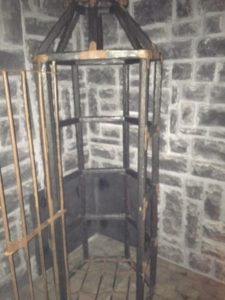 The gibbet. This was used in a variety of ways. A living prisoner could be locked inside until he died of dehydration, exposure, or starvation. Or the body of an executed prisoner could be displayed. This was often used for pirates.
The gibbet. This was used in a variety of ways. A living prisoner could be locked inside until he died of dehydration, exposure, or starvation. Or the body of an executed prisoner could be displayed. This was often used for pirates.
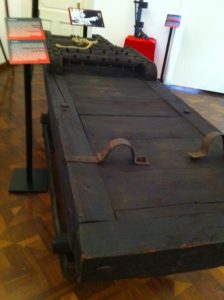 The rack. Technically, this was used to torture people rather than execute them. But death was a common result, either immediately or eventually, since the device dislocated limbs.
The rack. Technically, this was used to torture people rather than execute them. But death was a common result, either immediately or eventually, since the device dislocated limbs.
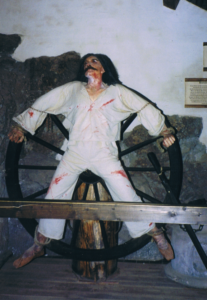 The wheel. Criminals were tied to the wheel and usually all their limbs were broken. If they didn’t die right away, they might be left to die of exposure, shock, or dehydration.
The wheel. Criminals were tied to the wheel and usually all their limbs were broken. If they didn’t die right away, they might be left to die of exposure, shock, or dehydration.
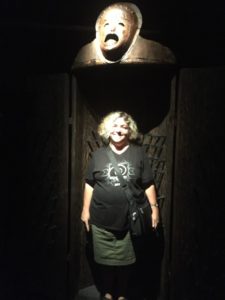 It’s debatable whether the iron maiden was ever actually used. This replica has rubber spikes, fortunately for me.
It’s debatable whether the iron maiden was ever actually used. This replica has rubber spikes, fortunately for me.
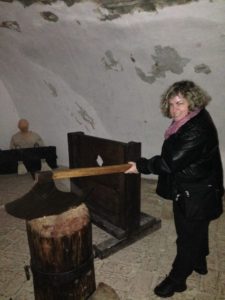 Decapitation. Quick and easy, and doesn’t require much equipment. (I’m thankful to various Croatian tour guides and museum employees for encouraging me to play with their exhibits.)
Decapitation. Quick and easy, and doesn’t require much equipment. (I’m thankful to various Croatian tour guides and museum employees for encouraging me to play with their exhibits.)

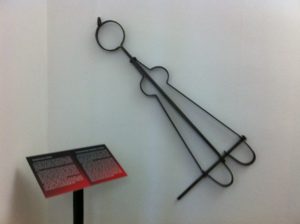 This is a restraint device called a scavenger’s daughter. The head went through that ring at the top, hands through the middle arches, and feet through the bottom loops. A few hours spent in that position would get very uncomfortable.
This is a restraint device called a scavenger’s daughter. The head went through that ring at the top, hands through the middle arches, and feet through the bottom loops. A few hours spent in that position would get very uncomfortable.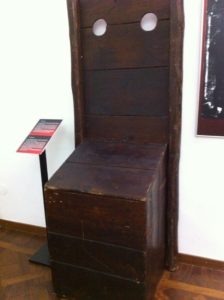 The throne. A suspect could be attached to it in a variety of positions and then flogged or otherwise tortured.
The throne. A suspect could be attached to it in a variety of positions and then flogged or otherwise tortured.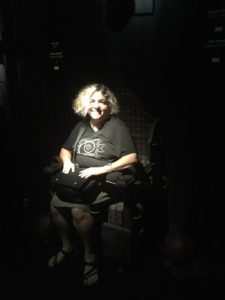 Interrogation chair. Okay, not the comfiest of seats, but not as awful as it looks. But it does look scary, and a suspect’s legs or arms could be smushed into the spikes.
Interrogation chair. Okay, not the comfiest of seats, but not as awful as it looks. But it does look scary, and a suspect’s legs or arms could be smushed into the spikes.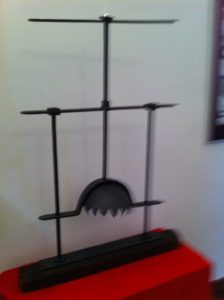 Head crusher.
Head crusher.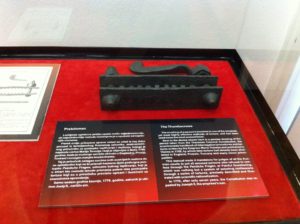 And the thumbscrew.
And the thumbscrew.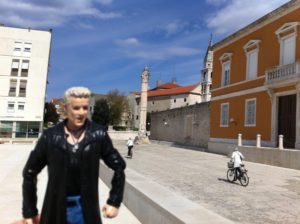 See that pillar to the right of Spike? In Roman times, people would be tied to it and flogged; that space around it was essentially the main square. I took this photo in Zadar, Croatia.
See that pillar to the right of Spike? In Roman times, people would be tied to it and flogged; that space around it was essentially the main square. I took this photo in Zadar, Croatia. Branks were metal masks, often in the shape of animal heads. Some had metal flanges that went into the mouth. Branks were often used on women who were considered quarrelsome.
Branks were metal masks, often in the shape of animal heads. Some had metal flanges that went into the mouth. Branks were often used on women who were considered quarrelsome.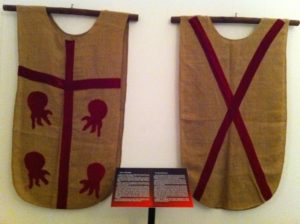 Some people who violated religious norms might be required to wear these vests. I don’t know what the jellyfish-looking things are supposed to be.
Some people who violated religious norms might be required to wear these vests. I don’t know what the jellyfish-looking things are supposed to be.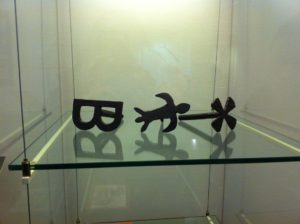 Branding was a more permanent way of identifying criminals.
Branding was a more permanent way of identifying criminals.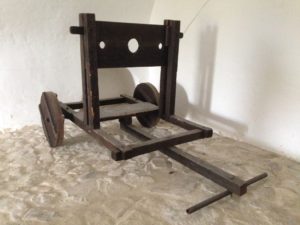 This is a pillory. Some were stationary but some, like this one, could be driven around town. The offender might be flogged while he was locked in it.
This is a pillory. Some were stationary but some, like this one, could be driven around town. The offender might be flogged while he was locked in it.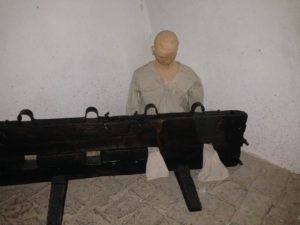 These are stocks. Which would actually be pretty ineffective for a prisoner with no legs.
These are stocks. Which would actually be pretty ineffective for a prisoner with no legs. This is Alcatraz, perhaps one of the most famous prisons in the world. It was a federal prison, housing those who were especially dangerous or high escape risks. But it was very expensive to run, so it operated as a federal prison for less than 30 years. We toured when my kids were younger, and they enjoyed. The littler one was especially taken with Al Capone’s story.
This is Alcatraz, perhaps one of the most famous prisons in the world. It was a federal prison, housing those who were especially dangerous or high escape risks. But it was very expensive to run, so it operated as a federal prison for less than 30 years. We toured when my kids were younger, and they enjoyed. The littler one was especially taken with Al Capone’s story. This is a recent photo of what was once the largest mental hospital in California, the Stockton Asylum. It opened during gold rush times and remained in use as a mental hospital until 1995. It’s now a university campus.
This is a recent photo of what was once the largest mental hospital in California, the Stockton Asylum. It opened during gold rush times and remained in use as a mental hospital until 1995. It’s now a university campus.